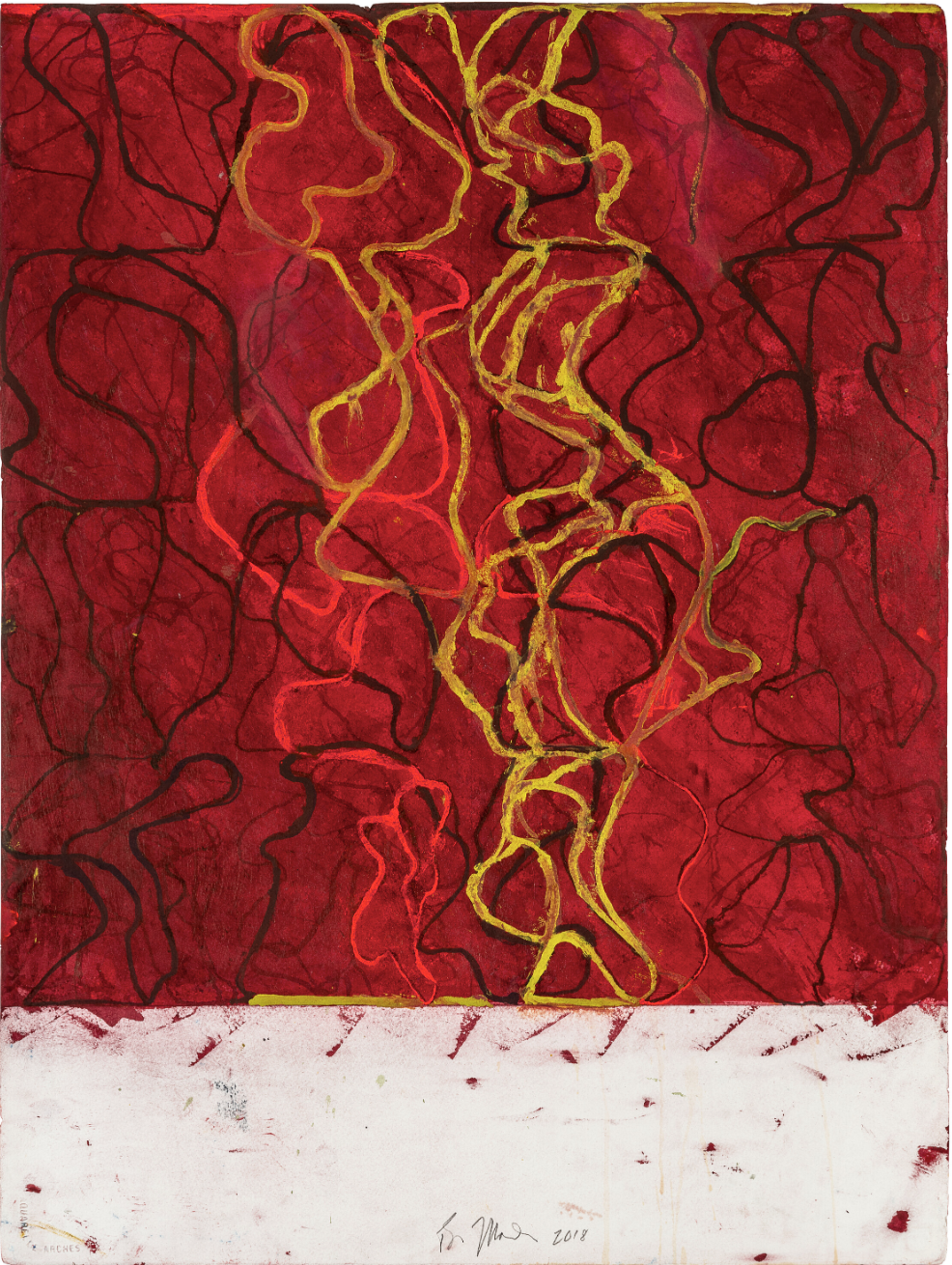Brice Marden
Brice Marden, one of the leading figures in contemporary American art, is known for his deeply introspective and methodical approach to painting. Fusing elements of minimalism with rich color exploration, Marden's work operates in a space between abstraction and gesture, seeking a purity of expression that transcends the constraints of both. His compositions—characterized by their subtle lines, carefully layered surfaces, and meditative qualities—invite the viewer into a contemplative space where time and perception fold into one another. Marden’s art does not demand attention with overt dramatism; rather, it gently compels engagement through its quiet intensity and precise balance.
Marden's early works, such as *The Lay of the Land* (1967), introduced his signature style of thin, meandering lines that create complex, yet understated, visual rhythms. These intricate linear patterns often unfold across large, sparsely populated canvases, allowing for a sense of both openness and structure. In his celebrated *Cold Mountain* series (1989–1991), Marden expanded on his delicate linework, using layers of muted color to evoke a profound sense of landscape, memory, and the passage of time. The series, inspired by his travels to China and his admiration for Chinese calligraphy and philosophy, combines quiet, meditative marks with earthy, layered tones, subtly recalling the traditional Chinese ink paintings and the idea of space as a spiritual dimension.
What distinguishes Marden’s art is his ability to imbue minimal forms with a sense of emotional weight and depth. His works do not simply depict or represent—they resonate with the viewer’s own sense of experience. Whether in his lush monochromes or in his more complex grid-like compositions, such as *The Dylan Painting* (1969), Marden evokes an interplay of time, place, and the human condition, inviting contemplation rather than immediate recognition. His use of color is particularly notable; it is nuanced, sophisticated, and never arbitrary. The slow, deliberate application of paint and the focus on surface quality are essential to the meditative nature of his work, where the subtle shifts of hue and tone provide a quiet but rich visual experience.
Brice Marden, Air, 1987
While often associated with minimalism, Marden’s work transcends the coolness of that movement, merging its formal simplicity with a deep sensibility toward the personal and the sensory. His later works, such as his *Notebook* series (2011–2013), reveal a growing embrace of expressive color fields and more intuitive forms, expanding his previously rigorous style into a more fluid and emotionally expansive language. These paintings, sometimes incorporating gestural sweeps of paint, represent a shift toward greater spontaneity, while still maintaining the restraint and structure that is integral to his oeuvre. In these works, Marden explores a balance between order and freedom, form and dissolution.
Born in Bronxville, New York, Marden studied at the Yale School of Art, where he began to develop his distinctive approach to abstraction. He was influenced by a wide range of sources, from early modernist movements like Abstract Expressionism to Eastern philosophy and the spiritual traditions of ancient art. After completing his studies, Marden moved to New York, where he quickly became part of the emerging downtown art scene, alongside artists such as Donald Judd, Dan Flavin, and Robert Ryman. Over the years, Marden’s exploration of line, form, and color has evolved, yet his commitment to precision, emotional resonance, and depth has remained constant.
Brice Marden, Nevis Night Drawing 3, 2018
Brice Marden, Complements, 2004
Brice Mardenm, The Attended, 1996
Brice Marden's work has been the subject of major retrospectives at institutions like the Whitney Museum of American Art and the Guggenheim Museum, and his pieces are included in numerous prominent collections worldwide. His contributions to the development of contemporary painting, particularly within the context of minimalism and abstraction, have earned him a lasting place in the history of modern art. Marden’s ability to merge thoughtfulness with sensuality, simplicity with complexity, ensures that his work will continue to engage and inspire, offering a quiet but powerful meditation on the beauty of both space and form.
Brice Marden, Le Mien, 1976




